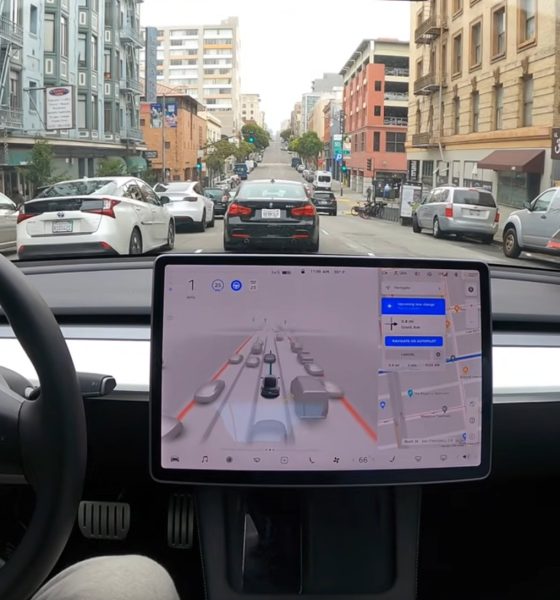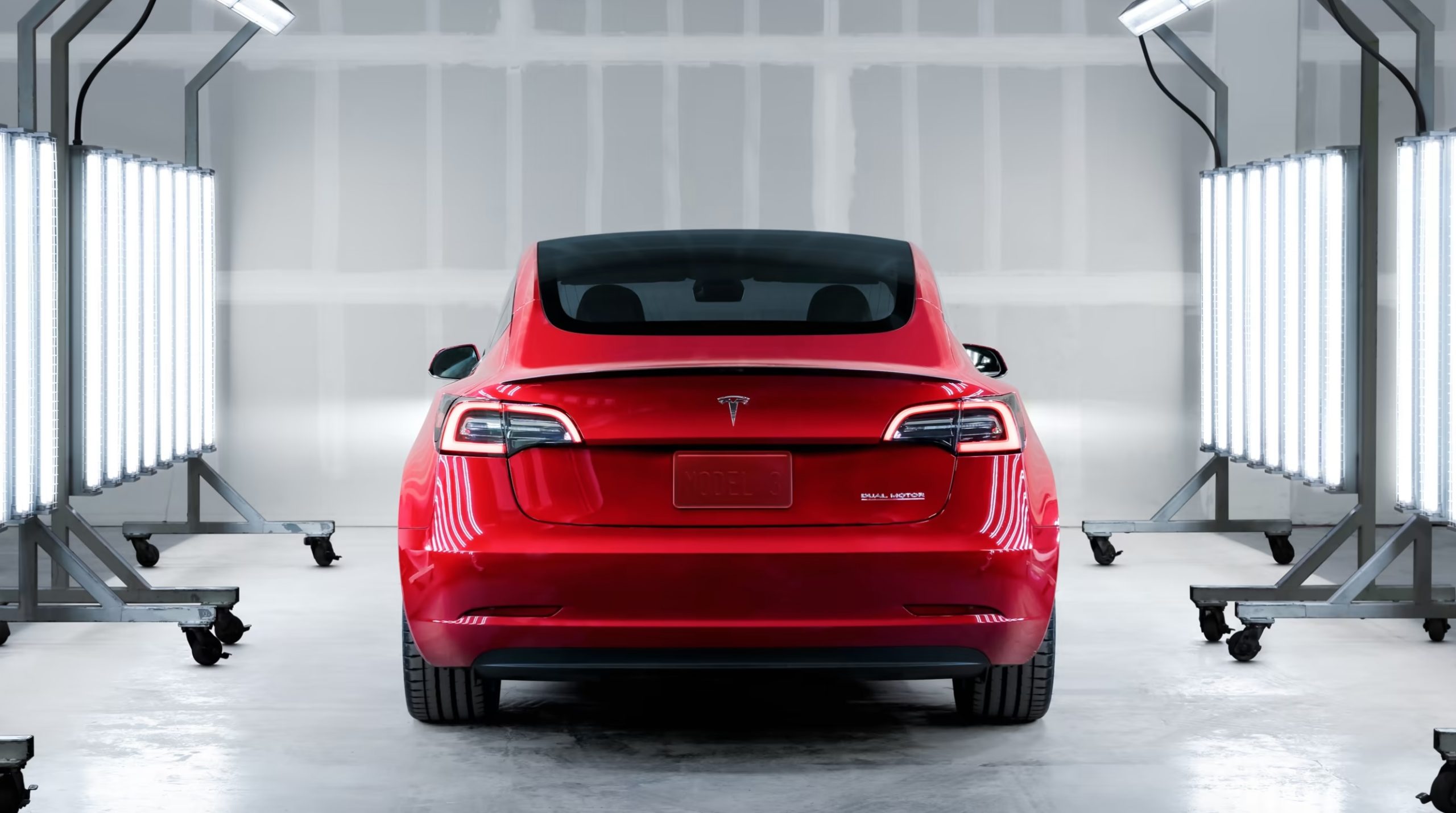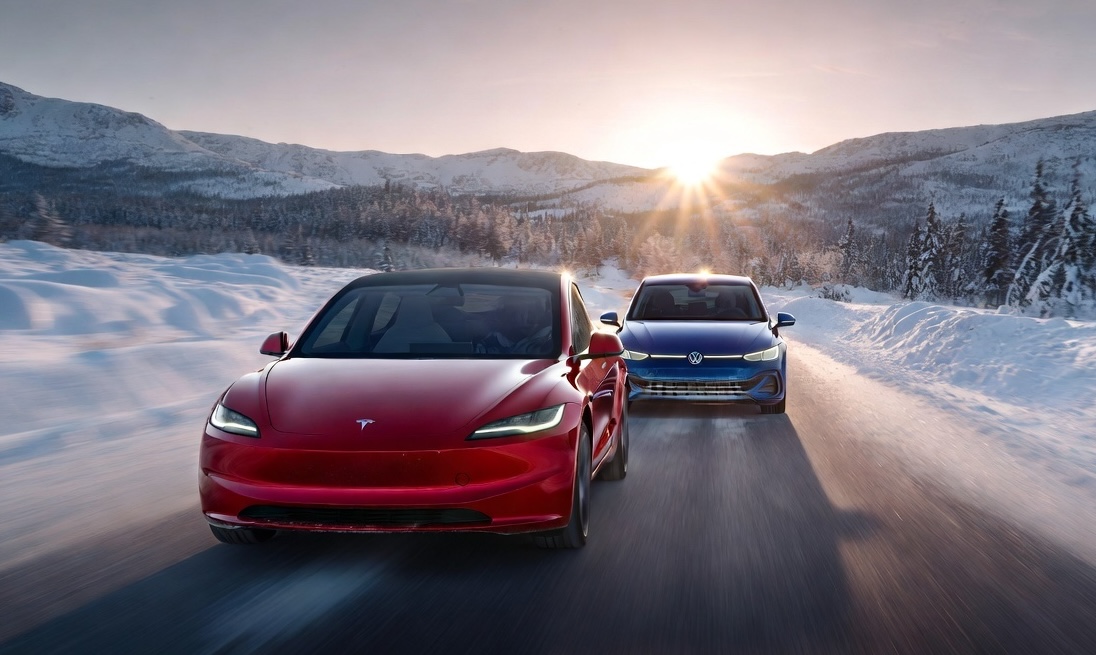

News
Opinion: Tesla Autopilot NHTSA investigation headlines are out of control
There is a difference between slant and straight-up inaccuracy. Slant is unavoidable as it typically relies on a writer’s personal biases. Making connections that could be immediately debunked with the slightest modicum of research, however, is completely avoidable. This was exactly the case on Monday as a wave of negative Tesla news emerged following an announcement that the NHTSA is launching a formal investigation on Autopilot over 11 incidents that involved Teslas crashing into parked emergency vehicles.
The NHTSA Investigation
The NHTSA’s ODI Resume was very brief and direct. And while the agency did state that it would be evaluating Autopilot for Model S, Model 3, Model X, and Model Y from model year 2014 to 2021, the NHTSA did note that its investigation would involve 11 incidents in the United States. These incidents resulted in 17 injuries and one fatality.
Tesla prides itself on being a company that focuses intently on the safety of its vehicles, and in this light, investigations that would make systems like Autopilot ultimately safer for the general public would likely be welcomed by the company. Elon Musk, after all, has posted in the past that he agrees with the NHTSA “99.9% of the time.” The Tesla CEO has also specified on Twitter that he thinks the “NHTSA is great.”
If one were to look at the coverage of the investigation in some mainstream media outlets, however, one would think that things are far more dire.
The Coverage and Missing Details
It is true that negative stories attract more eyeballs. This is something that has been true even before the days of online journalism. And in this landscape, a company led by a rebel CEO that no longer issues comments on issues is the perfect target. This could be seen in the headlines that immediately followed the NHTSA” s announcement. CNN’s headline, “Tesla is under investigation because its cars can’t stop hitting emergency vehicles,” is a great example of this. It’s sensationalist and it suggests that the issue being investigated by the NHTSA is something extremely grave. And this is just one outlet.
Other news outlets such as CNBC proceeded to feature Ford former Co-CEO Mark Fields, who proceeded to highlight that the NHTSA’s investigation covers Teslas from a large time period. Persistent Tesla bears were also featured for their take on the news despite their past accuracy on the EV maker.
Interestingly enough, one of the things that were not mentioned much (if at all) in the general coverage of the NHTSA Autopilot investigation was the state of the drivers in some of the incidents. As aggregated by some Tesla watchers online, a good number of the drivers in the 11 crashes were hardly the most attentive. Two incidents were deemed as DUI cases, for example, and one driver had a suspended license. Four cases involved driver inattention, with one incident having a driver who did not have their hands on the wheel for 3 minutes 41 seconds. The other four incidents have no police report readily available.
An Unrelated Incident
On the same day as the NHTSA announced its investigation, a Tesla Model 3 was involved in a car crash at a school parking lot in the UK, injuring six people. It did not take long before Reuters, citing a report from The Telegraph, ran with a headline which read “Six injured as self-driving Tesla crashes in school car park in Southern England – Telegraph.” Such a headline immediately raised red flags, the first being that no Teslas owned by consumers today are “self-driving” cars per se. They have advanced driver-assist features, but those still require constant attention.
This headline grabbed a lot of attention — that much was no surprise. What was unfortunate was that as it became clear that the Tesla involved in the incident could not be a “self-driving” car, Reuters proceeded to issue a retraction on the article, stating that it had updated the story to correct the headline and drop the “self-driving” reference. The publication, however, kept a section of the article which still stated that it remained to be seen if the Tesla that injured six people had a driver behind the wheel at the time of the incident.
The Perfect Target
Tesla is no stranger to negative reporting, and that’s to be expected. Some negative slant from a reporter covering news about the company is pretty understandable, after all. However, it becomes a bit more difficult to justify errors such as those committed by Reuters about the UK incident. Even a little research on the features of a Model 3 in Europe would show that there are no “self-driving” Teslas right now, after all, and narratives which seem to hint at rogue electric cars are ultimately just as fantastical as they are inaccurate.
This may not be Tesla’s first rodeo with false news, but it’s not like there is nothing that could be done. Tesla China, for example, has adopted an assertive external relations and legal campaign that pursues false reporting on Giga Shanghai, and it has worked to great effect. Whether a similar strategy would work in the United States is up for question, but there seems to be few reasons remaining why Tesla should just allow itself to be a punching bag for misinformation without even airing its side.
Don’t hesitate to contact us with news tips. Just send a message to tips@teslarati.com to give us a heads up.

News
Tesla Sweden faces fresh union blockade at key Gothenburg paint shop
Allround Lack works with painting and damage repair of passenger cars, including Teslas.

Tesla’s ongoing labor conflict in Sweden escalated again as the trade union IF Metall issued a new blockade halting all Tesla paintwork at Allround Lack in Gothenburg.
Allround Lack works with painting and damage repair of passenger cars, including Teslas. It currently employs about 20 employees.
Yet another blockade against Tesla Sweden
IF Metall’s latest notice ordered a full work stoppage for all Tesla-related activity at Allround Lack. With the blockade in place, paint jobs on Tesla-owned vehicles, factory-warranty repairs, and transport-damage fixes, will be effectively frozen, as noted in a report from Dagens Arbete. While Allround Lack is a small paint shop, its work with Tesla means that the blockade would add challenges to the company’s operations in Sweden, at least to some degree.
Paint shop blockades have been a recurring tool in the longstanding conflict. The first appeared in late 2023, when repair shops were barred from servicing Tesla vehicles. Days later, the Painters’ Union implemented a nationwide halt on Tesla paint work across more than 100 shops. Since then, a steady stream of workshops has been pulled into the conflict.
Earlier blockades faced backlash from consumers
The sweeping effects of the early blockades drew criticism from industry groups and consumers. Employers and industry organization Transportföretagen stated that the strikes harmed numerous workshops across Sweden, with about 10 of its members losing about 50% of their revenue.
Private owners also expressed their objections. Tibor Blomhäll, chairman of Tesla Club Sweden, told DA in a previous statement that the blockades from IF Metall gave the impression that the union was specifically attacking consumers. “If I get parking damage to my car, I pay for the paint myself. The company Tesla is not involved in that deal at all. So many people felt singled out, almost stigmatized. What have I done as a private individual to get a union against me?” Blomhäll stated.
In response to these complaints, IF Metall introduced exemptions, allowing severely damaged vehicles to be repaired. The union later reopened access for private owners at workshops with collective agreements. The blockades at the workshops were also reformulated to only apply to work that is “ordered by Tesla on Tesla’s own cars, as well as work covered by factory warranties and transport damage on Tesla cars.”
News
Tesla breaks Norway’s all-time annual sales record with one month to spare
With November alone delivering 4,260 new registrations, Tesla has cemented its most dominant year ever in one of Europe’s most mature EV markets.

Tesla shattered Norway’s decade-old annual sales record this month, overtaking Volkswagen’s long-standing milestone with over one month still left in the year. Backed by surging demand ahead of Norway’s upcoming VAT changes, Tesla has already registered 26,666 vehicles year-to-date, surpassing Volkswagen’s 2016 record of 26,572 units.
With November alone delivering 4,260 new registrations month-to-date, Tesla has cemented its most dominant year ever in one of Europe’s most mature EV markets.
Model Y drives historic surge in Norway
Tesla’s impressive momentum has been led overwhelmingly by the Model Y, which accounted for 21,517 of Norway’s registrations this year, as noted in a CarUp report, citing data from Elbil Statistik. The Model 3 followed with 5,087 units, while the Model S and Model X contributed 30 and 19 vehicles, respectively. Even the parallel-imported Cybertruck made the charts with 13 registrations.
Demand intensified sharply through autumn as Norwegian buyers rushed to secure deliveries before the country’s VAT changes take effect in January. The new regulation is expected to add roughly NOK 50,000 to the price of a Model Y, prompting a wave of early purchases that helped lift Tesla beyond the previous all-time record well before year-end.
With December still ahead, Tesla is positioned to extend its historic lead further. Needless to say, it appears that Norway will prove to be one of Tesla’s strongest markets in Europe.
FSD could be a notable demand driver in 2026
What’s especially interesting about Tesla’s feat in Norway is that the company’s biggest selling point today, Full Self-Driving (Supervised), is not yet available there. Tesla, however, recently noted in a post on X that the Dutch regulator RDW has reportedly committed to issuing a Netherlands national approval for FSD (Supervised) in February 2026.
The RDW posted a response to Tesla’s post, clarifying the February 2026 target but stating that FSD’s approval is not assured yet. “The RDW has drawn up a schedule with Tesla in which Tesla is expected to be able to demonstrate that FSD Supervised meets the requirements in February 2026. RDW and Tesla know what efforts need to be made to make a decision on this in February. Whether the schedule will be met remains to be seen in the coming period,” the RDW wrote in a post on its official wesbite.
If FSD (Supervised) does get approved next year, Tesla’s vehicles could gain a notable advantage over competitors, as they would be the only vehicles on the market capable of driving themselves on both inner-city streets and highways with practically no driver input.
News
Tesla Full Self-Driving v14.2’s best new feature is not what you think

Tesla Full Self-Driving v14.2 rolled out late last week to Early Access Program (EAP) members, but its best feature is not what you think.
While Tesla has done a great job of refining the performance of the Full Self-Driving suite with the latest update, there are some other interesting additions, including one that many owners have requested for some time.
Upon the release of v14.2, many owners recognized the Blue Dot next to the Autopilot tab in Vehicle Settings, notifying them of a new feature. What was included as a new feature in the new update was a Full Self-Driving stats feature, which now will show you how many miles you’ve traveled in total, and how many of those miles were driven using FSD:
🚨 The coolest non-driving change of Tesla Full Self-Driving v14.2 pic.twitter.com/HOJcFaV2Ny
— TESLARATI (@Teslarati) November 21, 2025
The feature seems to be more of a bragging rights thing than anything, but it will also give drivers a good idea of how many miles they are using Full Self-Driving for. Those who use telematics-based insurance services will also be able to run experiments of their own, and could determine whether their premiums are impacted by the use of Full Self-Driving, and whether it is more advantageous to use over manual driving.
Tesla rolled out numerous other improvements with Tesla Full Self-Driving v14.2, most notably, the company seems to have resolved previous complaints about brake stabbing and hesitation. This was a major complaint in v14.1, but Tesla has seemed to resolve it with this newest branch of the FSD suite.
There were also improvements in overall operation, and it was notably smoother than past versions. Speed Profiles are seemingly refined as well, as they seem much more fixed on how fast they will travel and how aggressive they will be with things like passing cars on freeways and lane changes.
In future updates, Tesla plans to add Parking Spot selection, along with overall operational improvements. However, CEO Elon Musk recently said that the next branch, Full Self-Driving v14.3, will be where the “final piece of the puzzle is placed.” Tesla believes it is close to solving autonomy, so v14.3 could be a major jump forward, but it remains to be seen.








